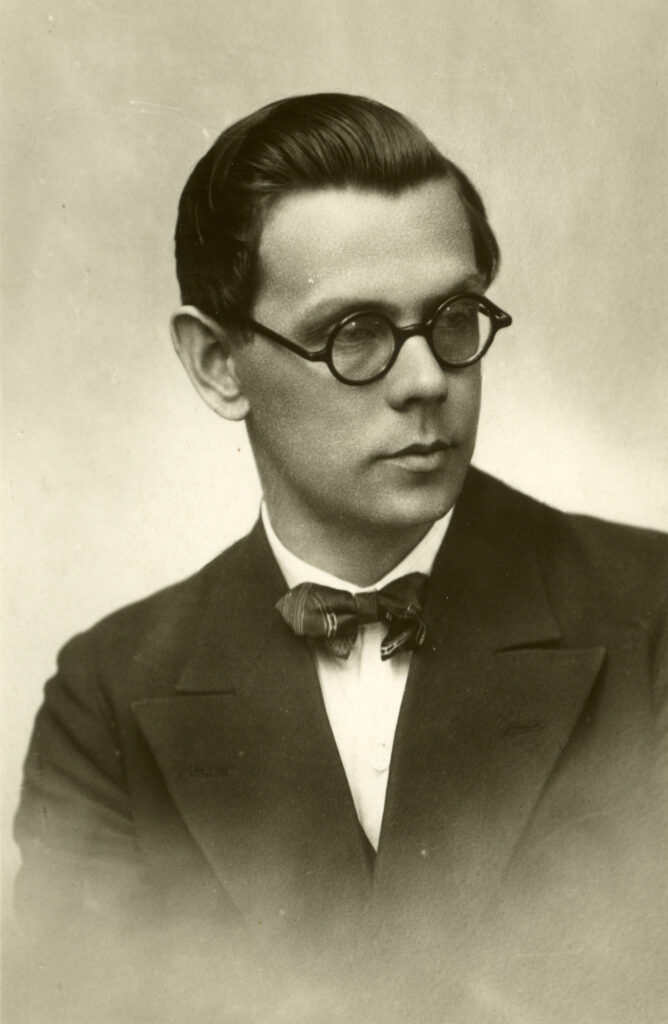
Pedro Krusten

Poems
Short stories
About Pedro Krusten
Pedro Krusten (real name Peeter Krustein, also used the pseudonym Salme Mets as a children’s writer, 21 May 1897 – 14 January 1987) was an Estonian writer.
Krusten was born in Harku parish as the son of the gardener of Muraste manor. He attended Rannamõisa village school and J. Kirsipuu’s progymnasium in Tallinn. In 1916, he completed Tallinn Secondary School of Science. From 1917 he served in the tsarist army. He escaped combat service because of studying at a military school. During the Russian Civil War, he served in the Red Army; in 1921 he returned to Estonia. In the 1920s, he worked as a court clerk of the Tallinn-Haapsalu Circuit Court, from 1926–1940 as a columnist, court correspondent and satire writer for the newspapers Vaba Maa, Rahvaleht, Päevaleht and Eesti Sõna, and for a year at a publishing house in Tartu. Krusten was a member of the Estonian Writers’ Union from 1931 and belonged to the Tallinn Writers’ Society founded in 1939. In 1944, he fled to Germany and from there to the USA in 1950. From 1951–1967, he worked for the Estonian Service of the Voice of America. Pedro Krusten died in Arlington, Virginia. In 1992, he was reburied to the Tallinn Forest Cemetery. His brothers were writer Erni Krusten (who lived and died in his native Estonia, 1900–1984) and cartoonist Otto Krusten (1888–1937).
Pedro Krusten’s first verses were printed in the journal Looming in 1923. His first novel Südame rahu (‘The Calm of the Heart’), published in 1928, won third place in the novel competition of the publishing house Loodus. He also received the same award in the same competition in 1930 for the novel Õilis vale (‘Noble Lie’). Krusten was a prolific writer of informal essays and novels, initially writing autobiographical books about wartime but then moving on to more psychological works about exile and home, internal struggles and adjustment. His original style intertwines memories, thoughts and cultural-historical knowledge.
Krusten gained greater attention as a writer with his novel Vehklemõisa aednik (‘Gardener of Vehklemõisa Manor’, 1936), which depicts his childhood home at Muraste. His most impressive work in exile is the so-called Kaldametsa trilogy: Torn üle metsa (‘Tower over the Forest’), Laul kõrgel kaldal (‘Song on the High Bank’) and Neiuke läks roosiaeda (‘A Maiden Went into the Rose Garden’).
In 1958, Krusten received the Henrik Visnapuu Literature Prize, issued by the International Estonian Literary Society and the Henrik Visnapuu Foundation as an Estonian literary prize abroad, for the book Kaugelviibija käekõrval (‘A Distant Traveller by Your Side’), which describes Visnapuu’s own life and fate after fleeing from the homeland.
On 17 August 1933, the newspaper Rahvaleht printed Pedro Krusten’s (under the pseudonym Miini Mihkel) little story Liisil on punane pliiats (‘Liisi Has a Red Pencil’). This seemingly innocent story contained an acrostic poem the first letters of which formed the phrase “lick your ass, censor”. It was a protest against the introduction of pre-censorship by the government during the then constitutional crisis and state of emergency. The newspaper issues were confiscated, and the newspaper was closed for three months. In 1989, the journal Vikerkaar republished the poem to celebrate the escape from Soviet censorship.
In addition to writing, Pedro Krusten also liked to draw. In his youth, his cartoons were published in the newspaper Kilk.
M. K. (Translated by I. A.)
Books in Estonian
Novels
Südamerahu. Tartu: Loodus, 1928, 184 lk.
Õilis vale. Tartu: Loodus, 1930, 271 lk.
Punane ohvitser. Tallinn: Aktsioon, 1932, 121 lk.
Vehklemõisa aednik. Tartu: Noor-Eesti, 1936, 213 lk.
Pime voorus. Tartu: Noor-Eesti, 1938, 188 lk.
Kalle Jaanuse kättemaks. Tallinn: Kultuurkoondis, 1939, 262 lk; [2. trükk, Tallinn: Eesti Raamat, 2009, 176 lk].
Üle parda. Augsburg: USA-ala Eestlaste Kirjastus, 1946, 214 lk.
Ihaldatud silmapilk. Vadstena: Orto, 1950, 261 lk.
Inimese hoidja. Lund: Eesti Kirjanike Kooperatiiv, 1952, 284 lk.
Laev akna taga. Lund: Eesti Kirjanike Kooperatiiv, 1955, 271 lk; [2. trükk, Tallinn: Eesti Raamat, 2004, 200 lk.
Torn üle metsa. Lund: Eesti Kirjanike Kooperatiiv, 1959, 295 lk; [2. trükk, Tallinn: Eesti Raamat, 1992, 207 lk].
Laul kõrgel kaldal. Lund: Eesti Kirjanike Kooperatiiv, 1962, 296 lk; [2. trükk, Tallinn: Eesti Raamat, 1992, 207 lk].
Neiuke läks roosiaeda. Lund: Eesti Kirjanike Kooperatiiv, 1963, 295 lk; [2. trükk, Tallinn: Eesti Raamat, 1992, 192 lk].
Pikerpõld ja piirapeel. Lund: Eesti Kirjanike Kooperatiiv, 1968, 256 lk.
Kingitus. Lund: Eesti Kirjanike Kooperatiiv, 1982, 180 lk.
Short stories
Vasema käega. Tartu: J. Mällo,1934, 116 lk.
Hädaohtlik tee. Tartu: Noor-Eesti, 1937, 107 lk.
Purustatud pesa. Tallinn: Ilukirjandus ja Kunst, 1941, 184 lk.
Otsiv hääl. Tallinn: A. Tõnisson & Ko, 1944, 127 lk.
Päästja. Geislingen: Kultuur, 1947, 123 lk.
Hiiekaldal. Geislingen: Kultuur, 1948, 173 lk.
Huupi valitud. Lund: Eesti Kirjanike Kooperatiiv, 1967, 254 lk.
Laevasõit Leaga. Lund: Eesti Kirjanike Kooperatiiv, 1973, 228 lk.
Lindude jooginõu. Lund: Eesti Kirjanike Kooperatiiv, 1990, 191 lk.
Aedniku armastus. Tallinn: Eesti Raamat, 1990, 344 lk.
Children’s literature
Salme Mets, Mall ja Sass. Geislingen: Kultuur, 1947, 12 lk.
Salme Mets, Malle jänku. Geislingen: Kultuur, 1947, 16 lk.
Salme Mets, Eesti laste jõulumees. Geislingen: Kultuur, 1947, 11 lk.
Miscellaneous
Kaugelviibija käekõrval. Lund: Eesti Kirjanike Kooperatiiv, 1957, 255 lk.
Hullumajast möödumisel. Lund: Eesti Kirjanike Kooperatiiv, 1972, 252 lk.
Aiapidu lampioonidega. Lund: Eesti Kirjanike Kooperatiiv, 1978, 223 lk.


